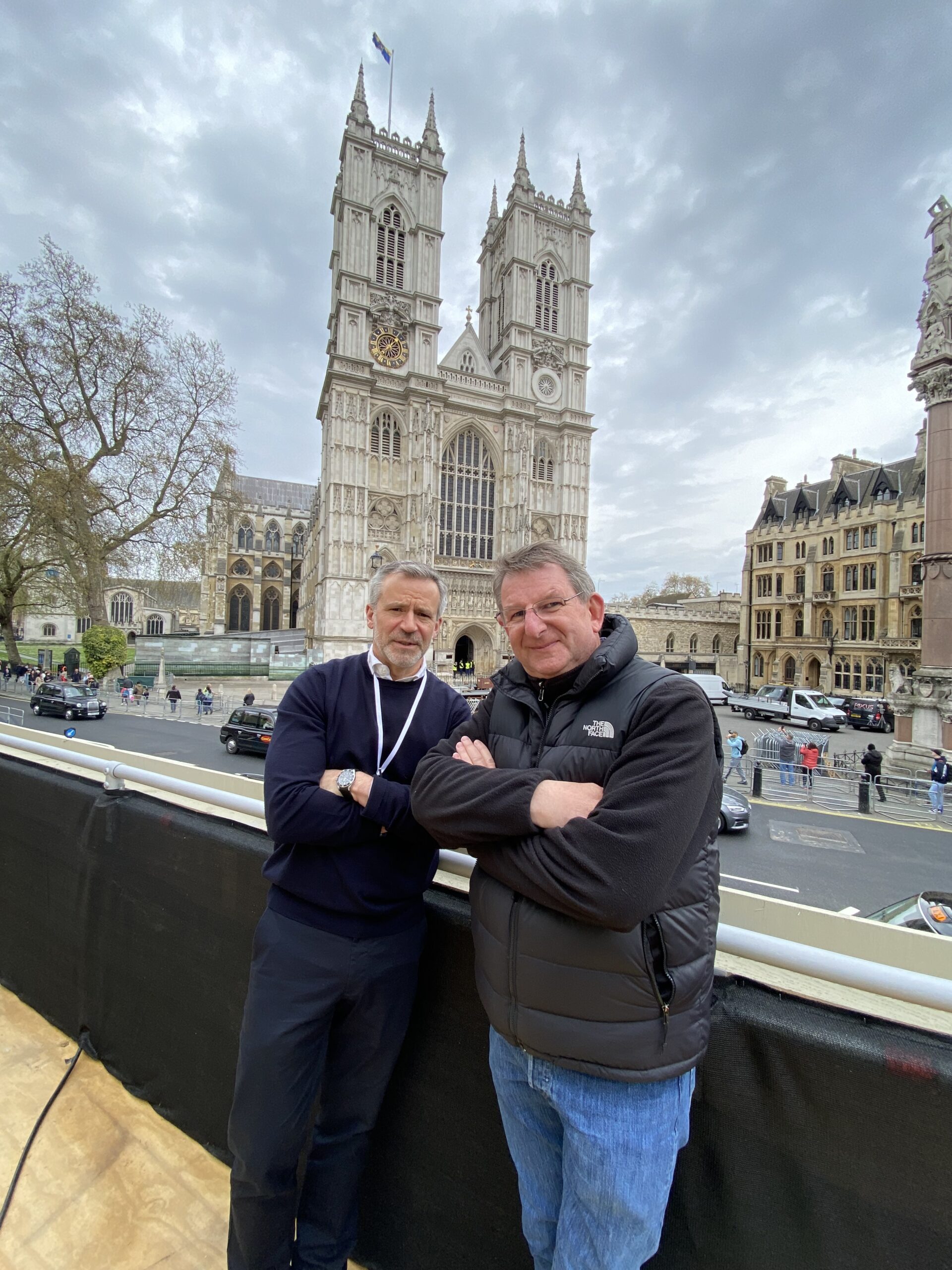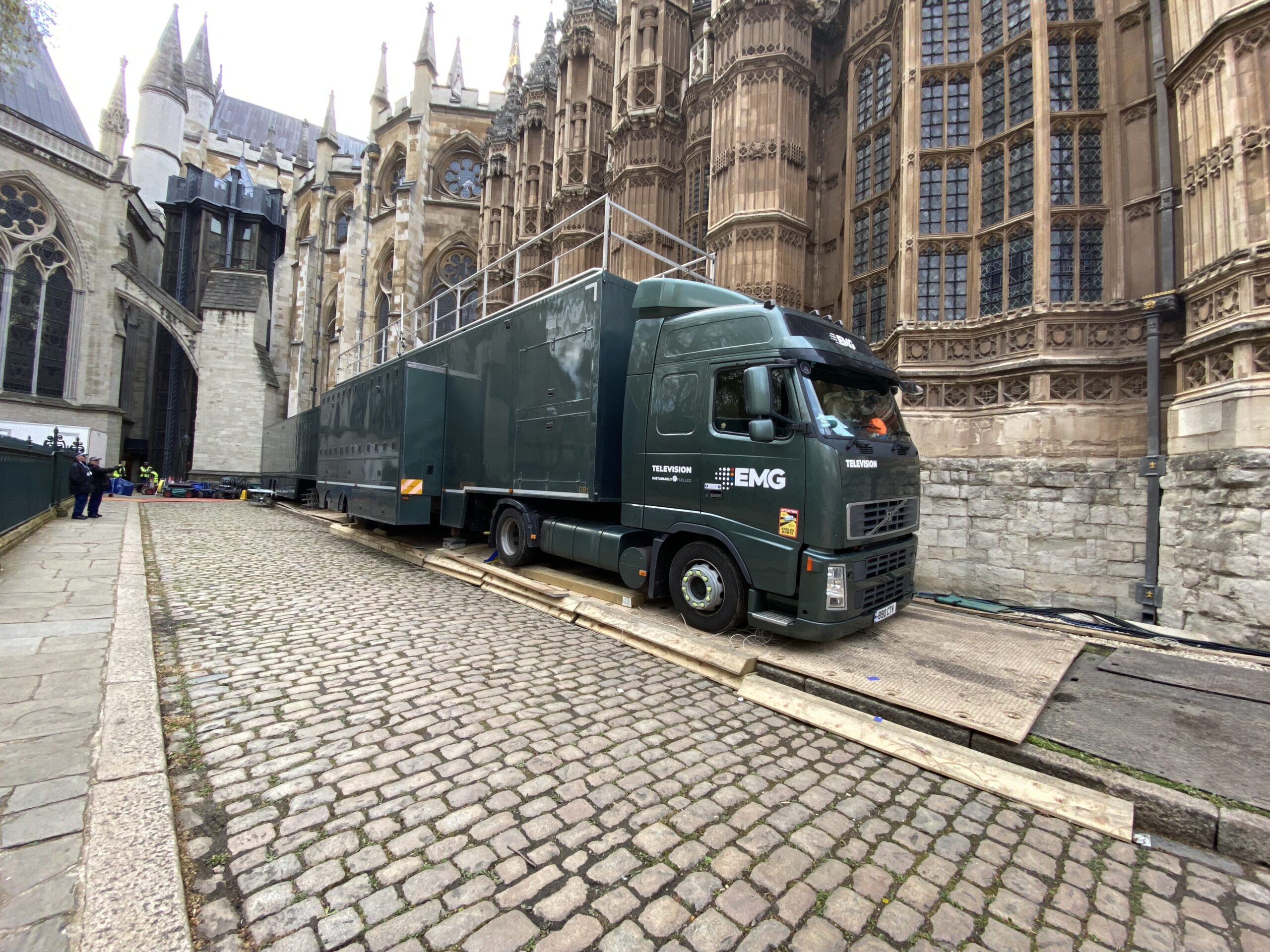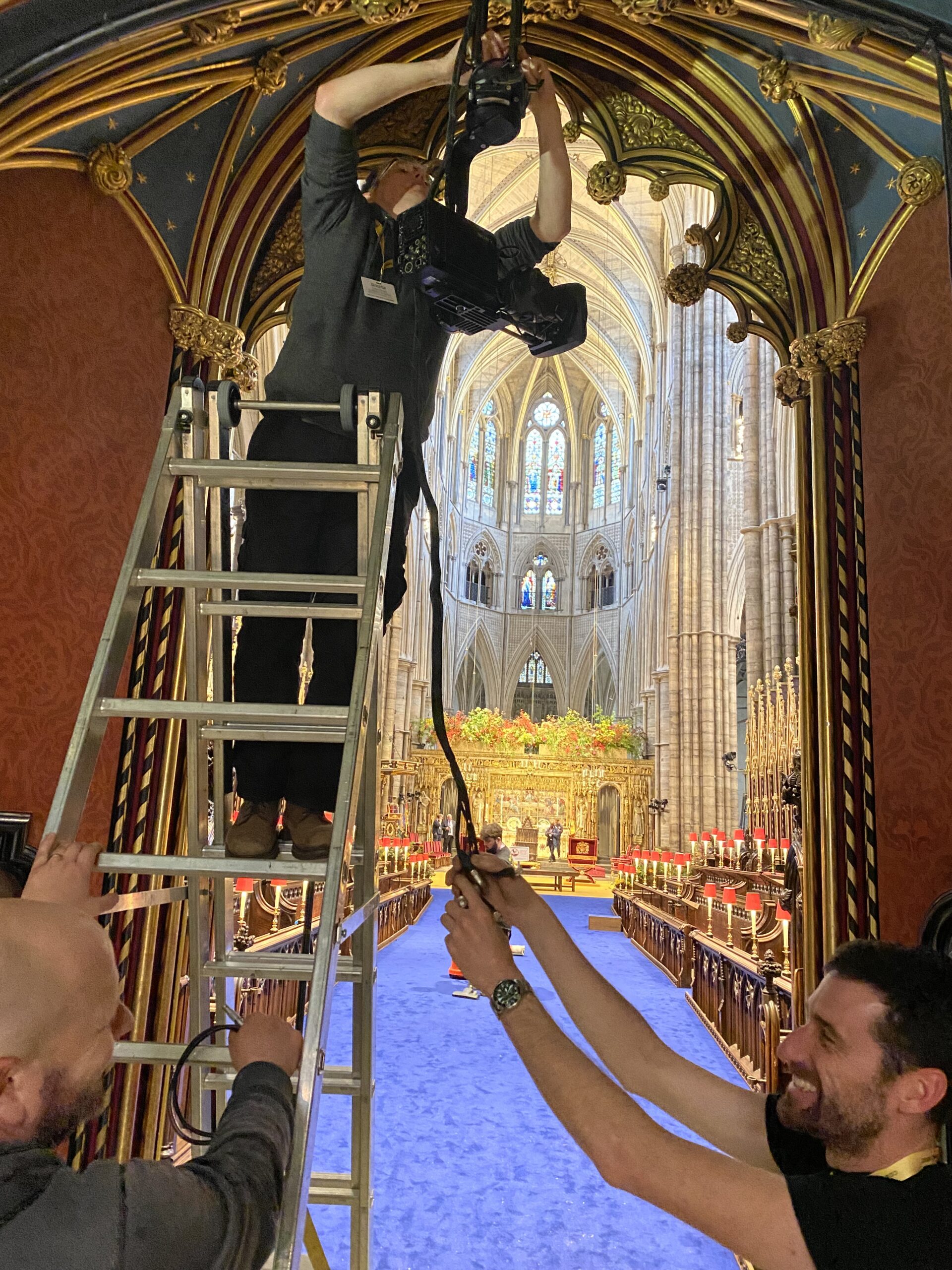Inside the Largest UHD/HDR Production Ever: the Coronation of King Charles III
More than 200 cameras, three compounds were deployed to provide wrap-around coverage
Story Highlights
When the coronation of King Charles III took place a little more than a month ago, it gave UK broadcasters a chance to shine on a global stage and also to provide plenty of wrap-around coverage. In the process, they made the Coronation the answer to a trivia question for years to come: What was the largest single-day event produced in UHD/HDR? The coronation of King Charles III on May 6, which was covered by more than 200 cameras.
The BBC, as UK state broadcaster, was at the center of the effort, providing a pool feed of the pageantry at Westminster Abbey for broadcasters all around the globe as well as a pool feed of the 1.4-mile procession from Buckingham Palace to the Abbey. ITN, meanwhile, produced its own unilateral coverage of the procession, with all broadcasters both domestic and international providing their own standups, studios, and talent positions.
For its part, ITN had three separate compounds, given the length of the procession: one at Canada Gate (near Buckingham Palace), another at White Hall, and the third at Westminster Abbey. The broadcaster also had 50 unilateral cameras.
“There’s no way we could have cabled or radio cameras along the whole thing,” says Jenny King, head of technical production, ITN. “We split it into sections and had a different director in each, who would then hand it over as the procession went along the route. There were essentially three submixes that were fed back into our main gallery at Grayson Road.”

ITN Camera Supervisor Ben Frewin (left) and ITN Technical Producer Bill Morris onsite at Westminster Abbey
ITN relied on EMG to provide technical facilities for the event, and Bill Morris, EMG, business development and technical management, was onsite with the team and served as ITN’s technical producer.
“”We were contracted by ITN, which is the main independent broadcaster in the UK, to provide their unilateral coverage of the entire route and everything up to King Charles entering the ‘Theatre of Coronation’ within the Abbey,” he says. “They wanted more of a holistic, wrap-around–style coverage of the event.”
Queen Elizabeth II’s death in September signaled the beginning of multiple operations. First was Operation London Bridge, which focused on reporting her death. That was followed by Operation Unicorn (covering the period between the death and the funeral) and Operation Lion (the transfer of the coffin from Edinburgh to Buckingham Palace and to Westminster Abbey).
All those plans had been sitting on the books for years and revisited each year to ensure that they were up to date. The Coronation plan, Operation Golden Orb, however, had not been on the books for years but was instead drawn up when various agreements between all the parties were nailed down.
“Once the contracts were awarded, the planning started,” says Morris. “Unlike royal funerals, none of us had done a coronation before; the last one was in 1953. We had some black-and-white footage from then, but no one had a blueprint. The BBC, to their credit, worked very hard in conjunction with the Palace to come up with that blueprint. And, while the BBC and ITN each worked in their own bubble for planning the production, there was also great cooperation.”
King notes that there were learnings from Operation London Bridge and that the ability to work closely with the Department for Culture, Media, and Sport made a difference. Although some roads were closed well in advance of the event, others were not closed until the night before.
“We could set up the Mall cameras,” she says, “but, as you get down to White Hall and to Trafalgar Square, nothing was closed. So the night before, we had to finish everything off. There were quite a few hoops to jump through to get set up.”
All told, EMG had seven trucks at Westminster Abbey, two at Richmond Terrace, and five at Canada Gate (Buckingham Palace). Other facilities suppliers provided more than 15 additional trucks across the route.
The side-by-side coverage of the procession featuring ITN and the BBC was reminiscent of another big show for EMG: the Open Championship, when NBC, Sky, and the host feed would have two or three cameras cutting different shows for their talent.
“They have different stories they want to tell,” Morris explains, “whether it is about the statuary and monuments along the route of our past Kings and Queens or other points of interest. It may seem extravagant, but they all want to tell the same story in a different way.”
The production along the procession and at the Abbey was complemented by studio coverage. Opposite the Abbey, an enormous multi-story structure allowed news organizations to do standups across the street from the church.
“There was also an enormous media park at Canada Gate with multiple studios overlooking Buckingham Palace,” says Morris. “In the same way that we shoot a marathon here, there was a huge amount of RF to get the remote cameras back to the hubs. We did local mixes along the route that fed back to the center, which was a BBC coordination scanner at Canada Gate.”
King says ITN was able to do a proof of concept with Vodafone: a piece of 5G spectrum was sliced off, dedicated to ITN, and used for transporting camera and audio signals.
“We took a portion of the bandwidth from the public network solely for us as a broadcaster,” she says. “We wanted to see if would work for other busy events, and it worked really well.
“What’s amazing,” she continues, “is that everyone just comes together. In planning, you can be on your own, but, when the event happens, everyone pulls together and wants to be part of it because it is historic.”
Adds Morris, “Every day’s a school day when doing a new event. Now that we have one under our belt, we’ll have a reservoir of knowledge and experience to build on for other coronations. The younger members of our team will need that at some point in the future.”


